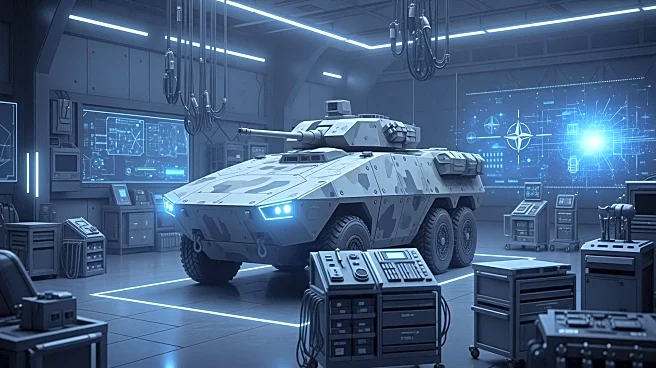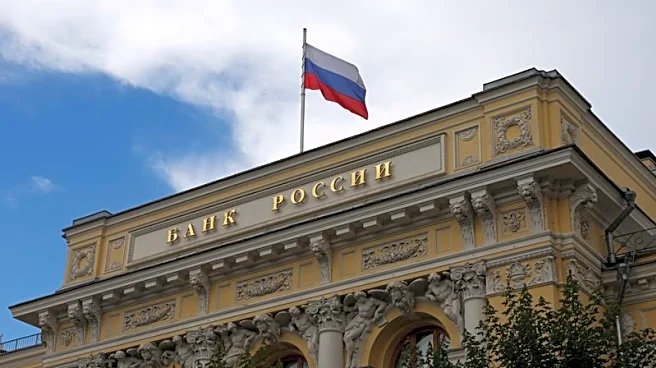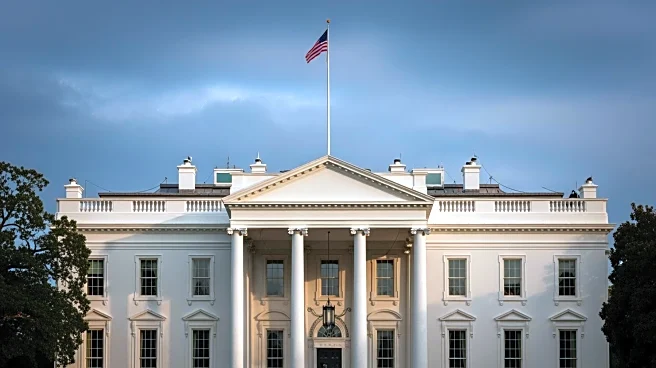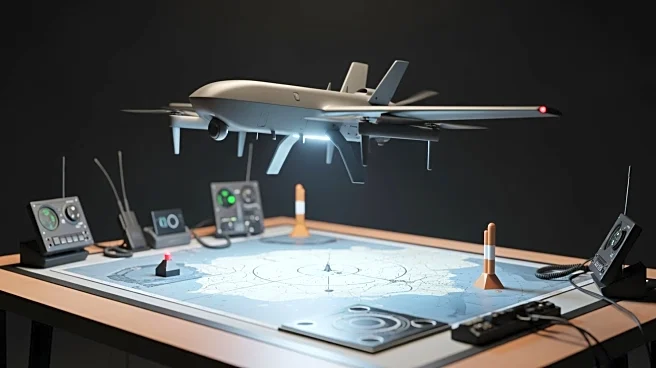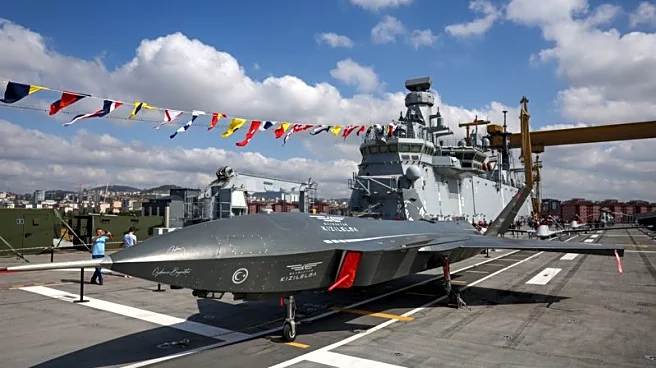What's Happening?
NATO's eastern flank is witnessing significant military developments as part of a strategic buildup to counter potential threats. At the AUSA 2025 exhibition in Washington DC, various armored vehicles
were showcased, highlighting a shift in military doctrine towards lighter, more maneuverable vehicles equipped with advanced protection systems. This shift is a response to the evolving threat landscape, particularly the tactics observed in the Ukraine conflict, where missile and drone salvos have been used to cause widespread damage. The exhibition featured the integration of the RCH 155 turret on a tracked vehicle, a first in the U.S., aimed at enhancing mobility in challenging terrains. Additionally, the Pandur SHORAD vehicle, equipped with advanced weaponry and radar systems, was displayed, emphasizing the need for distributed short-range air defense capabilities.
Why It's Important?
The developments on NATO's eastern flank are crucial for maintaining a strategic balance in the region, especially in light of recent Russian military tactics. The introduction of more agile and versatile armored vehicles reflects a broader shift in military strategy, focusing on distributed defense capabilities. This approach aims to enhance the protection of tactical units and ensure rapid response to threats. The integration of advanced radar and weapon systems on these vehicles signifies a move towards a more networked and coordinated defense posture. For the U.S. and its allies, these innovations are vital for deterring aggression and ensuring the security of NATO member states, particularly those in proximity to potential conflict zones.
What's Next?
As NATO continues to bolster its eastern defenses, further testing and deployment of these advanced armored vehicles are expected. The U.S. Army may consider adopting some of these innovations, such as the RCH 155 and Pandur SHORAD, to enhance its own capabilities. Additionally, ongoing collaborations between U.S. and European defense manufacturers could lead to further advancements in military technology. The strategic focus will likely remain on improving mobility, protection, and interoperability among NATO forces to effectively counter emerging threats.
Beyond the Headlines
The shift towards more agile and networked defense systems could have long-term implications for military procurement and strategy. As nations invest in these technologies, there may be increased emphasis on developing autonomous and remotely operated systems, reflecting broader trends in military innovation. This could also lead to changes in training and operational doctrines, as forces adapt to new capabilities and tactics. Furthermore, the geopolitical landscape may be influenced by these developments, as nations seek to balance deterrence with diplomatic efforts to maintain regional stability.
